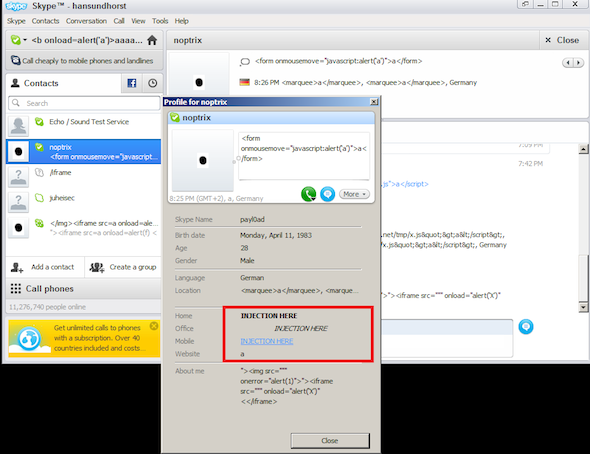Hacktivists protested recent controversial actions taken by a San Francisco regional subway authority by publishing sensitive information for more than 2,000 of passengers who had nothing to do with its agency’s management.
Anonymous, the loose-knit hacking collective, breached the security of MyBart.org and published the names, street and email addresses, and site passwords for about 2,400 people who had set up accounts on the site. It’s operated by BART, short for the Bay Area Rapid Transit. Database dumps such as the one here also included phone numbers for many users.

It was accompanied by a scathing note that said Anonymous took the action to protest two fatal police shootings in the past few years and the temporary suspension of cellphone service BART imposed on Thursday. BART officials said they took the action at at least four stations to thwart demonstrations that were being organized using mobile devices.
“It’s just common sense that I shouldn’t be the target,” one of the victims whose details were included in the data dump told The Register. “I was just in the wrong place at the wrong time.” He asked that his name not be published in this article.
He said he received a “creepy” phone call on Sunday night from someone claiming to be a member of Anonymous who uttered “foul language, hushed tones and threats.” He said he has received no notification from BART representatives that his information was taken, contradicting claims officials made in a Sunday press release that “we notified those affected right away in case anyone tries to exploit the information.”
According to a note accompanying the published data, the user information was obtained after exploiting a SQL-injection vulnerability in the MyBart site. Such exploits typically allow attackers to enter powerful database commands into a web forum and get them executed by the site’s back-end server.
“They set up this website called mybart.gov and they stored their members information with virtually no security,” the Anonymous screed stated, mislabeling the top-level domain of the compromised site as .gov instead of .org. “Any 8 year old with a internet connection could have done what we did to find it. On top of that none of the info, including the passwords, was encrypted. It is obvious that BART does no give a fuck about its customers, funders and tax payers,THE PEOPLE” [sic].
BART spokesman Linton Johnson said on a conference call with reporters that he wouldn’t say whether the MyBart.org website had been tested by outside security auditors unless he received a public records request. He repeatedly characterized BART and its customers as “victims.”
“The bottom line is we did not violate our customer security and their privacy rights,” he said. “This group Anonymous did. This group Anonymous shares all the blame for violating not only the security but also for putting out people’s private information on the web, jeopardizing their security.”
He said BART officials have reported the breach to the FBI.
He didn’t address the claim challenged by one of the MyBart.org users that all people affected by the breach had been immediately contacted. MyBart.org wasn’t operational at time of writing.
The attack is the latest act of politically minded hacking to be attributed to Anonymous, which recently has taken credit for data dumps affecting thousands of US law-enforcement officers, an attack on a US government contractor, and a claimed breach of an Italian computer crime unit.
The weekend hack followed BART’s admission on Friday that it had suspended cellular service at San Francisco stations the night before to disrupt a planned demonstration protesting the fatal police shooting in July of a passenger accused of brandishing a knife and charging at BART police officers.
Officials admitted they disconnected nodes of cellular antennas used at several San Francisco stations. They said they took the action to prevent overcrowding and other unsafe conditions in the paid areas of its system and that service was restored a few hours later. Cellular service outside the stations was unaffected.
Civil libertarians, including the American Civil Liberties Union and the Electronic Frontier Foundation have blasted the move and drawn comparisons to former Egyptian President Hosni Mubarak, who ordered the shut down of cellular service in Cairo to quell recent protests against his rule. A California state senator has called on the Federal Communications Commission to investigate the black out.
After this article was first published, FCC officials said they were looking in to the move by BART.
“Any time communications services are interrupted, we seek to assess the situation,” FCC spokesman Neil Grace said in a statement. “We are continuing to collect information about BART’s actions and will be taking steps to hear from stakeholders about the important issues those actions raised, including protecting public safety and ensuring the availability of communications networks.”
What we’re left with here is a drama that seems replete with antagonists and no heroes.
BART’s Johnson repeatedly insisted that BART officials should shoulder no responsibility for the breach, even though it would appear they left the site open to some of the most rudimentary of attacks. We’ve written before about the unfounded trust people place in the websites they use and the wisdom of withholding, whenever possible, any personally identifiable information. Until BART is more forthcoming about how it secures its passengers’ data, add its websites to this long list.
Then you have the perpetrators of the attack pretending that they’ve done the world a favor by exposing the private information of thousands of people who did nothing more than rely on the transit agency to get around. ®
This story was updated to include information provided by BART spokesman Linton Johnson and the FCC.
Article source: http://go.theregister.com/feed/www.theregister.co.uk/2011/08/15/anonymous_breaches_bart_site/
